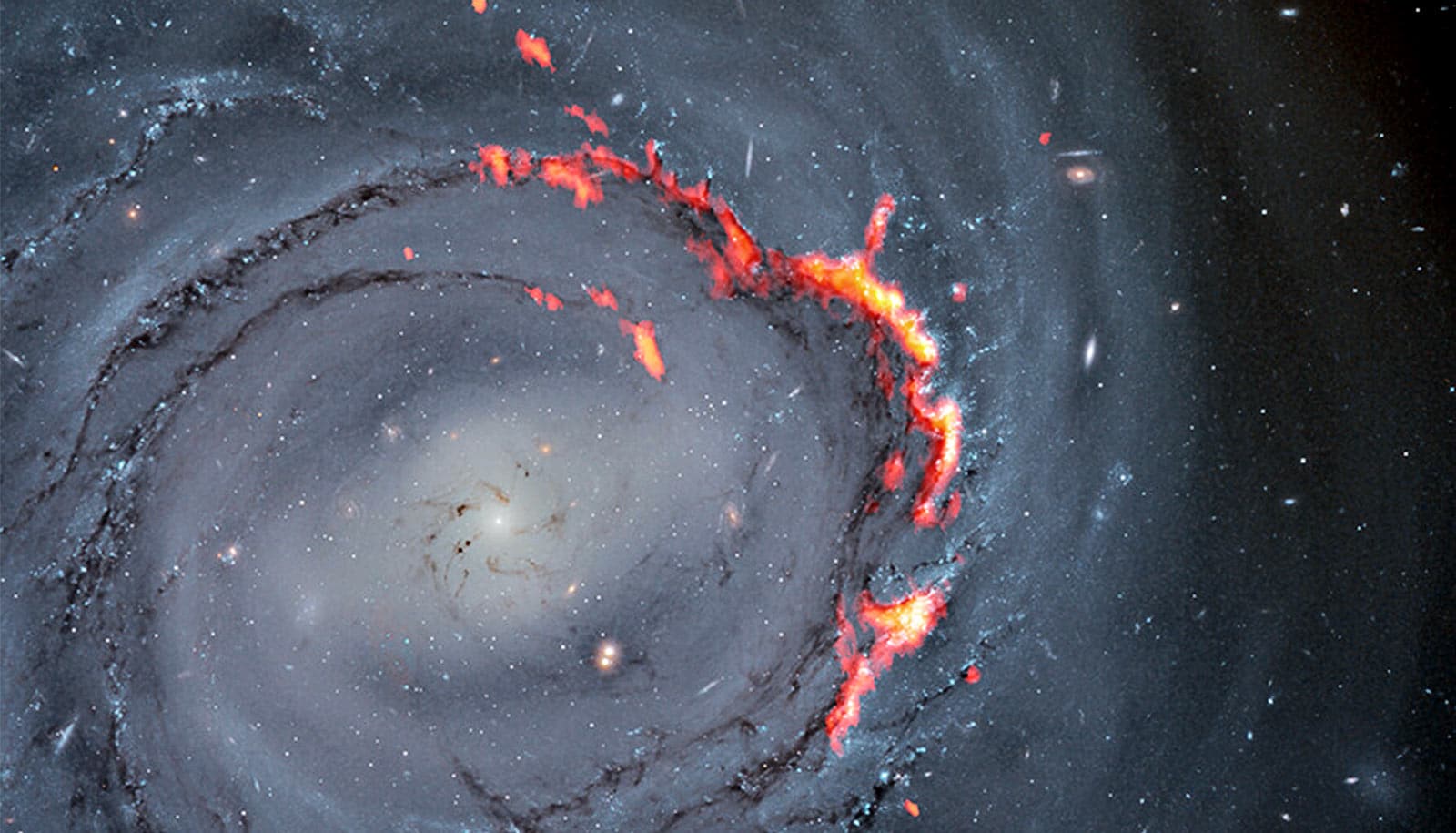
"We're calling MACS0416 the Christmas Tree Galaxy Cluster, both because it's so colorful and because of the flickering lights we find within it," says Haojing Yan. "We can see so many transients in certain regions of this area because of a phenomenon known as gravitational lensing, which is magnifying galaxies behind this cluster." (Credit: Getty Images )
Team finds new transient objects in ‘Christmas tree galaxy cluster’
Scientists have discovered 14 transient objects in a galaxy they've dubbed the "Christmas Tree Galaxy Cluster."
Scientists have discovered 14 new transient objects during a time-lapse study of a galaxy they’ve dubbed the “Christmas Tree Galaxy Cluster.”
The scientists used NASA’s James Webb Space Telescope (JWST) for the study of galaxy cluster MACS0416, located about 4.3 billion light years from Earth.
“Transients are objects in space, like individual stars, that appear to suddenly brighten by orders of magnitudes and then fade away,” says Haojing Yan, an associate professor in the physics and astronomy department at the University of Missouri.
“These transient objects appear bright for only a short period of time and then are gone; it’s like we’re peering through a shifting magnifying glass.
“Right now, we have this rare chance that nature has given us to get a detailed view of individual stars that are located very far away. While we are currently only able to see the brightest ones, if we do this long enough—and frequently enough—we will be able to determine how many bright stars there are, and how massive they are.”
Using the advanced technological capabilities of the JWST, the researchers confirmed what’s causing the galaxy cluster’s “ flickering lights ” or transients that scientists first saw years ago using NASA’s Hubble Space Telescope.
“We’re calling MACS0416 the Christmas Tree Galaxy Cluster, both because it’s so colorful and because of the flickering lights we find within it,” Yan says. “We can see so many transients in certain regions of this area because of a phenomenon known as gravitational lensing , which is magnifying galaxies behind this cluster.”
The team discovered the transients by studying four sets of images taken by JWST of the galaxy cluster over a period of 126 days, or about four months. Yan is particularly excited that two of the transients are supernovae —stars that are at the end of their lifespans—because the team can use them to study the supernovae’s host galaxies.
“The two supernovae and the other twelve extremely magnified stars are of different nature, but they are all important,” Yan says.
“We have traced the change in brightness over time through their light curves, and by examining in detail how the light changes over time, we’ll eventually be able to know what kind of stars they are. More importantly, we’ll be able to understand the detailed structure of the magnifying glass and how it relates to dark matter distribution. This is a completely new view of the universe that’s been opened by JWST.”
The study has been accepted for publication in the Astrophysical Journal .
Source: University of Missouri
The post Team finds new transient objects in ‘Christmas tree galaxy cluster’ appeared first on Futurity .
Share this article:
This article uses material from the Futurity article, and is licenced under a CC BY-SA 4.0 International License. Images, videos and audio are available under their respective licenses.
Related Articles:
Most isolated massive stars are ‘runaways’
Nov. 3, 2020 • futurity‘Cosmic boomerang’ shines light on life cycle of a galaxy
Aug. 17, 2021 • futurityLinks/images:
- https://www.futurity.org/black-hole-tears-apart-giant-star-2914082/
- https://www.futurity.org/gravitational-lensing-galaxies-1168132-2/
- https://www.futurity.org/organic-molecules-stars-planetary-nebulae-2580132/
- https://arxiv.org/abs/2307.07579
- https://showme.missouri.edu/2023/scientists-find-14-new-transient-objects-in-space-by-peering-through-a-galaxy-magnifying-glass
- https://www.futurity.org/transient-objects-galaxies-space-james-webb-space-telescope-2997702/
- https://www.futurity.org


